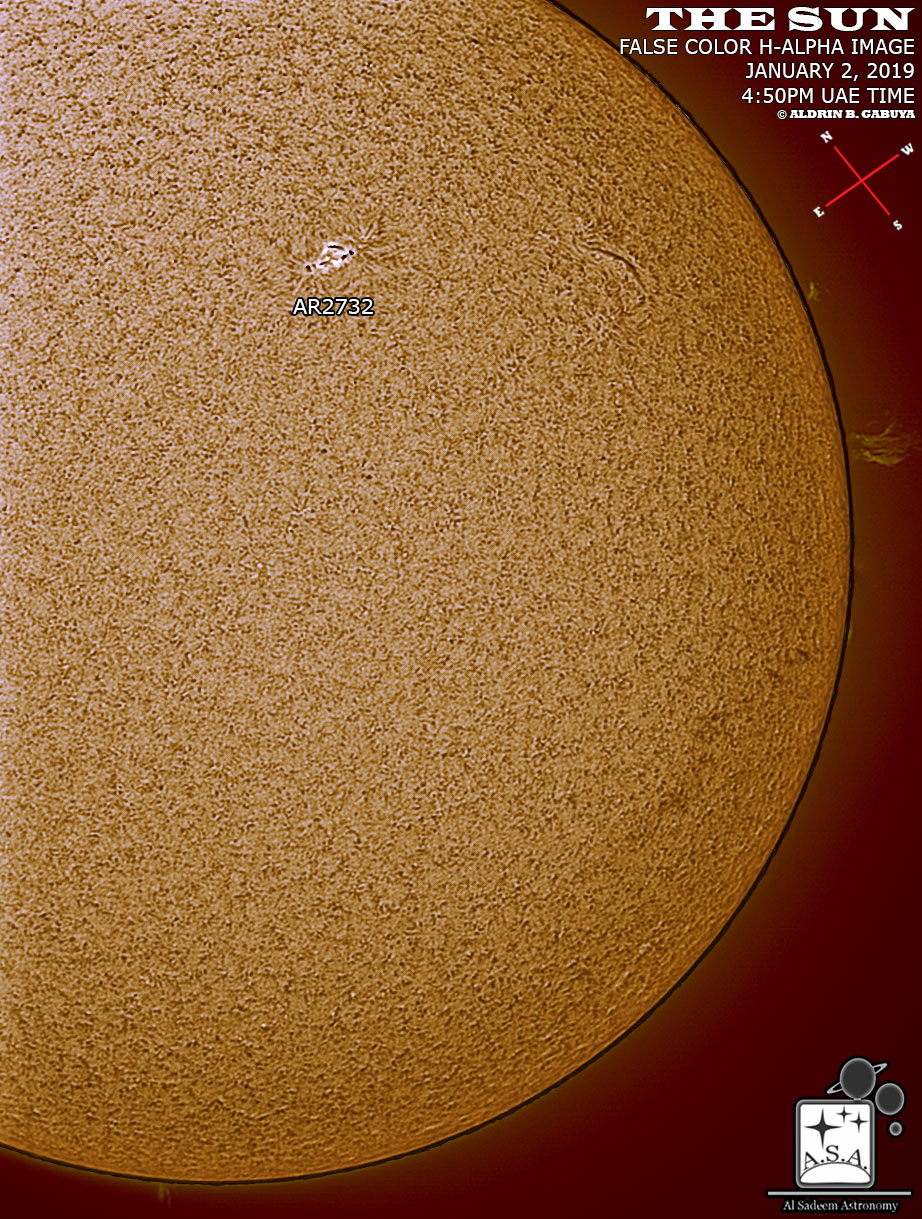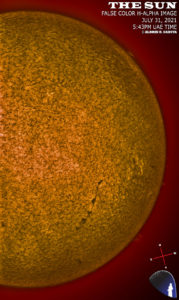Here are today’s solar images taken from Al Sadeem Observatory, January 2, 2019.
The sky was partly covered with high cirrus clouds in the west with prevailed light winds making the seeing and transparency average at the time these images were taken.
The first sunspot group for 2019. Newly designated sunspot group AR2732 (Modified Zurich/Mcintosh sunspot classification: Bxo/beta) has been growing in sunspot structure over the past 24 hours. This bipolar sunspot region produced a weak B-class solar flare based on space weather agency records. The latest sunspot number (based on visual count and Wolf number calculation) is 15. Other solar features observed were the plages associated with AR2732, filaments particularly shallow ones at the far southern hemisphere and small ones at the northeastern quadrant, as well a dark stable one east of AR2732, and a few prominences including a huge eruptive ejecting one at the western limb.
Space weather agencies* forecast solar activity to remain at very low levels with chances of weak X-ray fluxes or flares ranging up to B-class (possibly up to isolated C-class) intensity, mainly from AR2732. The extent of the frequency and intensity of the Sun’s activity will highly depend on the magnetic flux fluctuations happening in the visible ARs in the coming days. Close monitoring is being conducted by numerous space weather agencies for any significant development.
Equipment used are Skywatcher 120mm refractor telescope with Baader filter and unmodified Canon EOS 1D Mark IV DSLR camera for visible imagery and Lunt H-alpha solar telescope and ZWO120MM CMOS camera for H-alpha imagery, mounted on Skywatcher EQ6 Pro. Pre-processing of visible solar images was performed in PIPP, stacking in Autostakkert, slight wavelet adjustments in Registax 6 and post-processing in Adobe Photoshop CC.
*Technical reports courtesy of Solar Influence Data Center (SIDC), NOAA-Space Weather Prediction Center (NOAA-SWPC)







